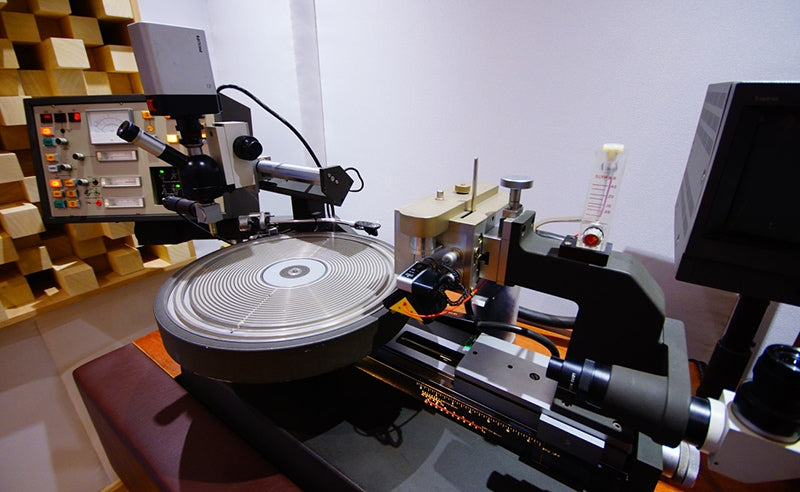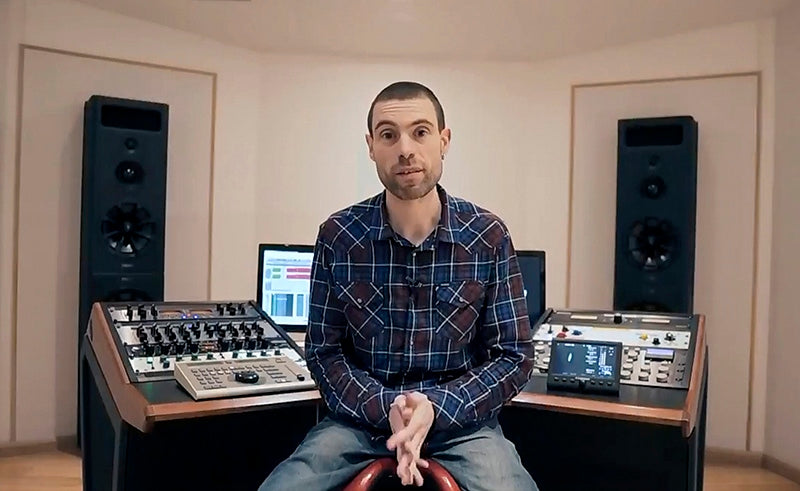Have you ever wondered, just how does a vinyl record even sound good at all? Well, how does it in reality? The PVC vinyl that records are made from, and the record-manufacturing process, aren’t exactly free from factors that can ruin the chances of cutting a good record. In fact, the odds are heavily stacked against it.
In this series we will examine and demystify the many contributing factors which each have a critically essential part to play in making an outstanding-sounding record, as compared to the average offerings that are out there en masse.
Back to the question. How does a record even sound good at all? I asked Lewis Hopkin, vinyl mastering engineer and owner of Stardelta Audio Mastering, located in Dartmoor National Park in Devon, England. Stardelta offers a wide range of services including vinyl mastering and cutting, digital mastering, and mastering from stems or analog tape sources. He has formed a career spanning everything from GRAMMY award-winning records and worldwide number one hits to underground albums from independent artists in pretty much every genre of music. He has some strong opinions of which we include his thoughts here and in an upcoming Part Two, to appear in Issue 165.
Lewis Hopkin: Initially, I think the thing to say about a record is that I have always viewed [creating one] as a very honest and reasonably direct energy transfer, or at least [during] the cutting stage. After the cut, things get…interesting. What type of energy transfer are we referring to? Vibrations. Vibrations which are etched physically into the carrier [the vinyl record]. These grooves are then played back by a stylus that retraces the grooves. So, in essence, vibrations go in and those vibrations [ultimately] go [back] out to the speaker.
Although this is a gross oversimplification of the process, I have always felt that at least some of the lifelike qualities of a record, are just this. I feel that the emotional connection and realism we hear from records has a lot to do with the natural process of the reproduction of the vibrations. However, it would be hard to claim that making a high-quality record is a simple process, or indeed one that hasn’t undergone an enormous amount of processing.
I want to address the differences between a proper vinyl mastering engineer and a machine operator cutting at a pressing plant.
On the one hand you have an engineer who is dedicated to the technical pursuit and the audio pursuit of producing a profoundly impressive result. On the other hand, you have a machine operator who will do [simply] that, and will take the easiest and most efficient route to [producing a] product. And, of course, the [less-skilled or less-involved] machine operator will ruin the end result. Without fail, pressing plant cuts are compromised by being obligated to fit a directive: [be] quick and safe. The two approaches are at loggerheads with each other – day and night, chalk and cheese; yes, worlds apart.
You could produce a technically-perfect vinyl cut that ticks all the boxes of every desired technical mandate, but quite likely will sound terrible, because nearly all of the stereo [width], bass and top end has been removed from it to make it easy and safe to cut! This is habitual and indeed normal behavior at the cutting stage at [all too many] pressing plants. There are significant and insightful choices the professional vinyl mastering engineer has to make to preserve and optimize the great qualities which can result in an audio listening experience that sounds like no other. This is what we do here at Stardelta. It is an extremely involved and highly evolved skill set, which is required to produce such results, and takes years of experience to perfect. That is why when you have a record cut at a pressing plant [that might not be a specialist facility], it’s not the same as what we produce here at Stardelta, or with another vinyl mastering engineer who is a craftsman, not a machine operator. It has to be said though that some [more]-evolved pressing plants do use us to cut records for their direct clients. It goes without saying these are done with care like any other job we undertake and sound significantly better than the “operator” cuts.
Another important distinction, and something I come across in my work, is [that] some mastering engineers will sometimes offer masters to make vinyl records from, yet these engineers have never even been in the same room as a cutting lathe, let alone have any experience of actually cutting records or mastering for vinyl. They simply guess at what might work for vinyl. These best-guess masters are then given to operators at pressing plants to cut. The engineers remove anything that they think might cause problems. Often this is based on misunderstandings of what the vinyl may or may not do.

Record-cutting lathe at Stardelta Audio Mastering. From the Hutchinson Homes & Gardens website.
I take [a] big issue with this approach, as these engineers offer a digital file of a wild stab at what may work for a cut, which is truly at best a guess at what might work on the cut. In all [of these] cases they have compromised the original master by manipulating the parameters of what originally existed.
I want to say categorically that unless you are the vinyl mastering engineer who actually masters the record, including cutting the record, you are taking people’s money dishonestly. Vinyl mastering can only be carried out by the engineer who cuts the record.
Test cutting and listening and microscope inspection are intrinsically part of vinyl mastering. It’s not possible to do that without a cutting lathe, [or with] any claim you somehow can do this digitally and predict the future of how something will sound without [really] knowing.
The prominence or recent re-emergence and popularity of the vinyl medium has meant a proliferation of bad-sounding records, often cut from 16-bit CD or even just MP3 masters. The common denominator of most reissues is that they are made to very poor standards of quality and this is sadly true of most major label’s reissues. Lots of these are cut with no respect for the music. The [corporate] mandate is an easy-to-cut record with all the difficult-to-deal-with areas of the original mixes simply removed. A narrative I hear a lot is, “vinyl can’t do that,” or “vinyl can’t do this.” It’s rubbish.
The new listening audience is missing out on the potential of what can be heard, so we are continually seeking to address this. It is true that vinyl is not automatically better than digital, but it must be acknowledged that there is categorically no problem in reproducing a completely perfect rendition on vinyl of anything than can be done digitally. When done right, vinyl provides a high-end listening experience that is every bit that is good [as] high-resolution digital.
There is a qualifying caveat to that statement: Making a record the way it should be done may affect the playing time of a record side. But it is perfectly possible to do it with no reduction of stereo, and no reduction in bass, or high frequencies. It’s also entirely untrue that heavily-compressed music doesn’t work on vinyl. It works fine and sounds just as bad or good as it did before. It’s a creative choice. A good vinyl mastering engineer will work with compressed music with high average levels and still get a great-sounding result.
You can cut brick-wall, limited masters if that is what is required; however, [cutting music with] high average levels will use much more disc space, so in the end the record ends up quieter, with a lower dynamic range.
******
We’ll continue Lewis’s discussion in Part Two. For now, we’ll leave with this thought: sound reproduction on vinyl can also be like a distortion amplifier. Something distorted on the way in could sound more distorted on the way out. So, how do we address the problems faced by this quest to get the perfect sound, as well as the perfect technical rendition?
We will break this down in Part Two, which will cover mastering and cutting, achieving proper cutting levels, and avoiding sibilance. Lewis and Russ will collaborate to also discuss the question of cutting with stereo versus mono bass, dealing with out-of-phase content, the problem of hysteresis in metering, decisions made regarding the use of the record’s inner diameter, and much more.



